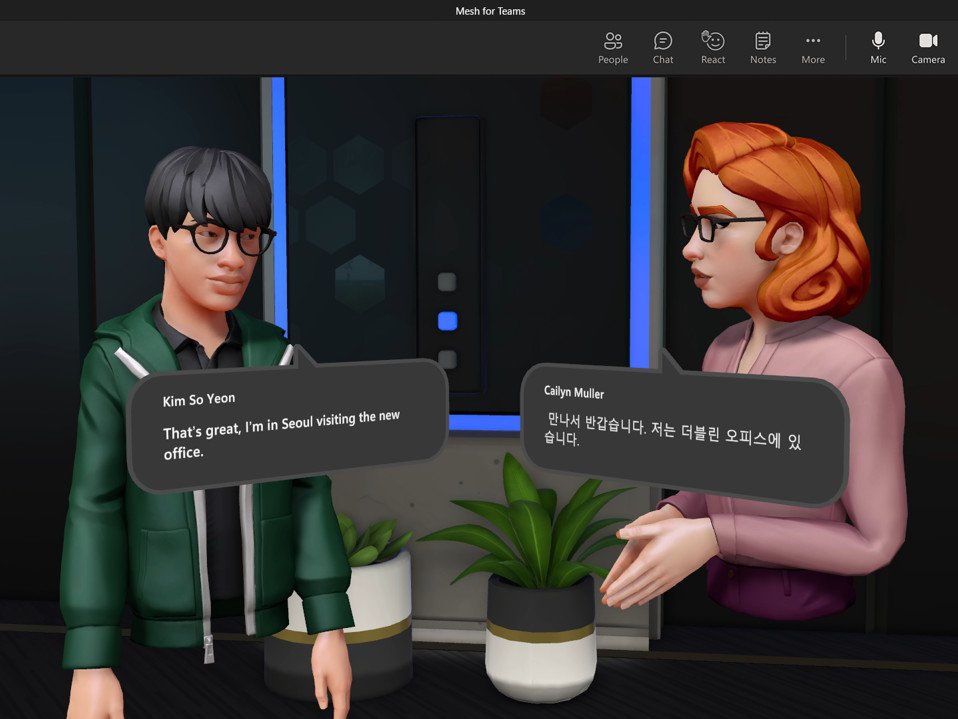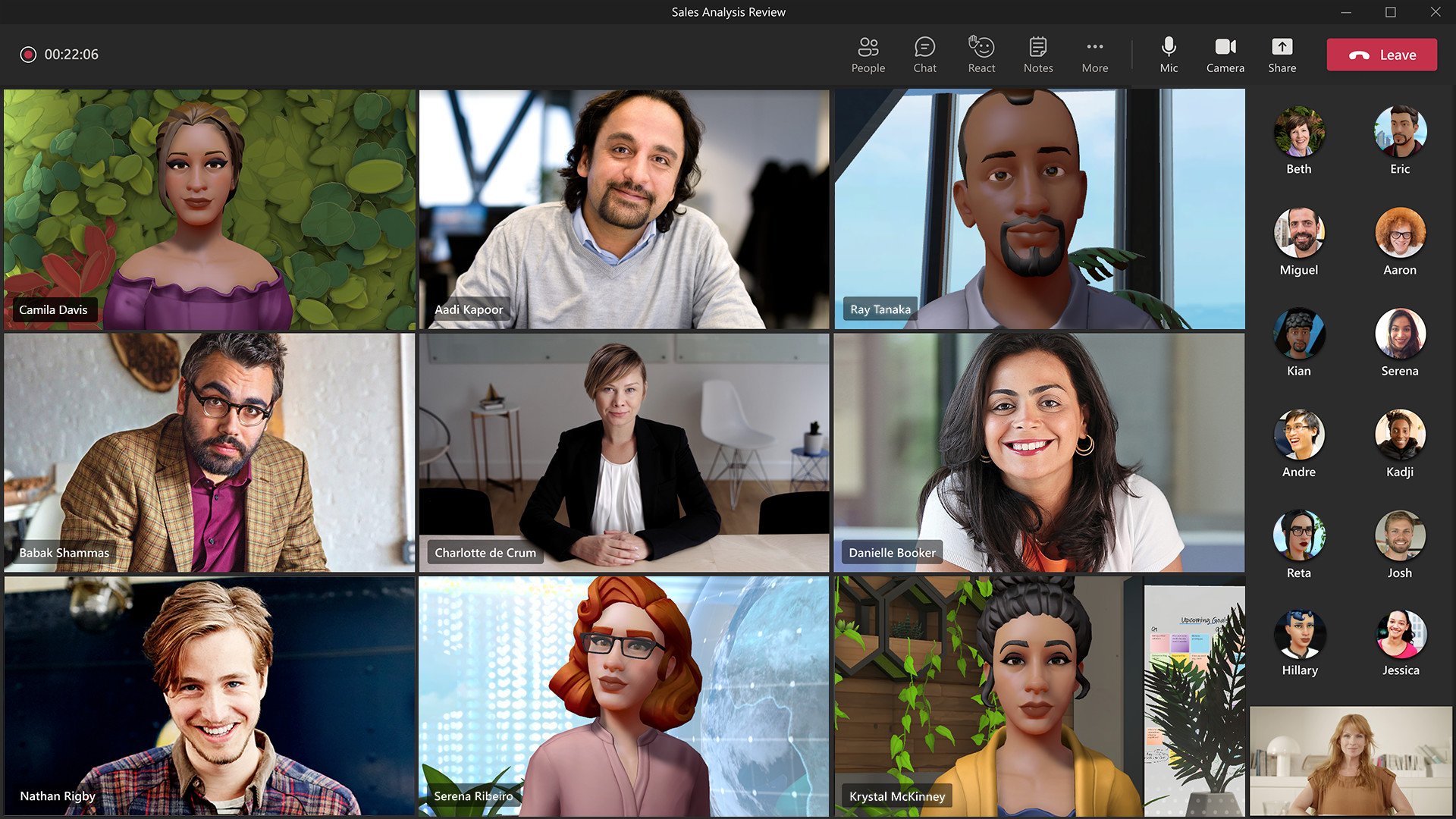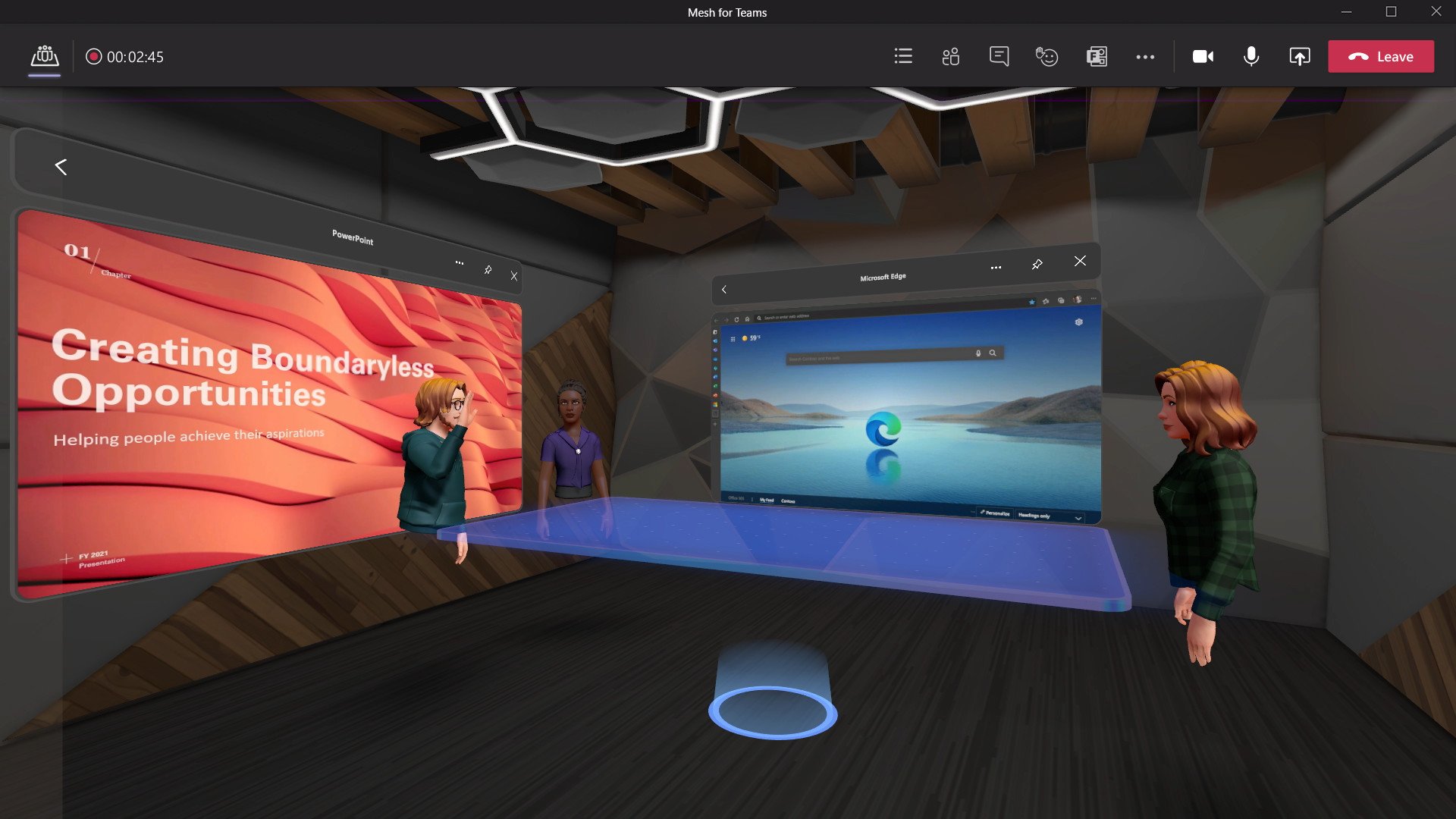Microsoft is bringing the metaverse to Microsoft Teams with Mesh in 2022
Personalized avatars and mixed reality are merging with Microsoft's popular collaborative software next year. Here's what that means.

What you need to know
- Microsoft is announcing its Mesh platform for Microsoft Teams.
- The new tech lets you use your webcam to create an animated avatar for online meetings.
- Microsoft and Accenture are already using the platform as a virtual campus called the Nth Floor.
- Mesh for Teams coming in early 2022 and is part of the 'metaverse' push by technology companies.
The "metaverse" concept has been around since 1992 ever since Neal Stephenson referred to it in his book Snow Crash for a 3D world with avatars as alternatives for real people. But the term is being thrown around in 2021 faster than big data, Artificial Intelligence (AI), Blockchain, NFT, and Internet Of Things (IoT). Heck, even Microsoft CEO Satya Nadella is now talking about it.
That makes Microsoft's Ignite announcement around Mesh coming to Teams in 2022 seemingly trendy, but in fact, the company has been working on the technology behind it since 2010 with ground-breaking HoloLens headset.
Announced in March of this year, Microsoft Mesh is a form of "holoportation" that lets groups of first-line works remotely collaborate on technical projects through its HoloLens platform. But today, the company is moving forward with that concept to "knowledge workers" by bringing Mesh to Microsoft Teams starting early next year.
What is Mesh for Microsoft Teams? In its earliest stages next year, it is simply an avatar that you can design to represent you in online video meetings. And no, a $3,000 Microsoft HoloLens 2 is not required, nor even a Mixed Reality (MR) headset. Katie Kelly, a principal project manager at Microsoft, working on Mesh for Teams, explained it in today's press release:
"To start, we will take audio cues so as you talk your face will animate," Kelly said. "You'll also have animations that bring additional expressivity to the avatars. Your hands will move. There will be a feeling of presence even though it's as simple as being able to take your audio and manifest that as facial expressions. That's the first release. The ambition is to closely follow that with Microsoft's plethora of AI technologies so that we can use the camera to insinuate where your mouth is and mimic your head and facial movements."The experience will continue to evolve over time as sensor technology improves across devices, from phones to virtual reality headsets, from laptops with a single microphone to a HoloLens with six microphones and 16 cameras. Whatever the device, the mixed-reality technology will give each user an avatar that provides a sense of presence that allows them to be their expressive selves when they don't want to be on camera
The concept falls back to Microsoft's goal with Teams to let people more closely work together when remote but addresses ongoing issues with work-from-home scenarios. Microsoft cites ongoing research that shows people are more engaged with video during online meetings, for probably obvious reasons. But some gripes lead to people flipping off their cameras, too, whether it was just burnout from too many video calls, not wanting to change attire for the meeting, or maybe even the urge to multitask while not looking distracted.
Substituting your live image for your avatar that animates based on your voice and movements acts as a buffer to those grievances while letting your team know you are present and engaged. At the very least, it's a lot better looking than a static bubble with your initials.
Microsoft Mesh for Teams is not just a concept, either. Microsoft describes its work with Accenture, which has "more than 600,000 people serving clients all over the world," and its use of Mesh for Teams. Microsoft and Accenture created the "Nth Floor," which serves as a virtual campus letting employees gather for coffee, presentations, parties, and other events no matter their actual location. Later, the same technology was adapted for onboarding new employees.
All the latest news, reviews, and guides for Windows and Xbox diehards.
A realistic virtual reality?
What is interesting is the news for Mesh for Microsoft Teams is that it doesn't feel like some far-fetched concept akin to Facebook's recent announcement with Nintendo-level corniness. Using existing technology like office webcams and Teams to create animated avatars is a logical first step — whether on a phone, tablet, or PC.
Of course, down the road, maybe we'll all be sporting MR and VR headsets to show up to the morning management meeting while floating in some computer-generated fish tank. But for now, Microsoft's use of Mesh for Teams feels achievable. As Microsoft's Katie Kelly remarks:
These avatars, Kelly added, are just the start. They'll follow users from the Teams meeting to other Mesh-enabled experiences including immersive spaces within Teams, such as Accenture's Nth Floor. "The idea is that you aren't locked into this 2D interaction with your avatar," she explained. "After I've formed a relationship with you, I know your avatar, I go into an immersive space that maybe has 20 other people in it. I'm going to see you in a corner and go, 'Hey,' and be able to go have a conversation."
Still, the overall buzzy-ness of "metaverse" does feel a bit overplayed, but maybe it is also the way to make AR and VR click with people, as clearly the application for consumers is lagging.
At the very least, Microsoft will make using its Teams software for video meetings a little less monotonous next year. Pajamas, messy hair, no makeup, all while multitasking when Barbara and John ramble on about those TPS reports? Sign us up.

Daniel Rubino is the Editor-in-Chief of Windows Central. He is also the head reviewer, podcast co-host, and lead analyst. He has been covering Microsoft since 2007, when this site was called WMExperts (and later Windows Phone Central). His interests include Windows, laptops, next-gen computing, and wearable tech. He has reviewed laptops for over 10 years and is particularly fond of Qualcomm processors, new form factors, and thin-and-light PCs. Before all this tech stuff, he worked on a Ph.D. in linguistics studying brain and syntax, performed polysomnographs in NYC, and was a motion-picture operator for 17 years.


